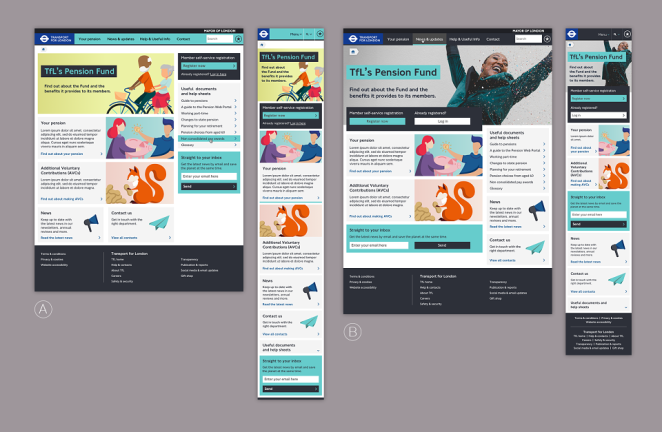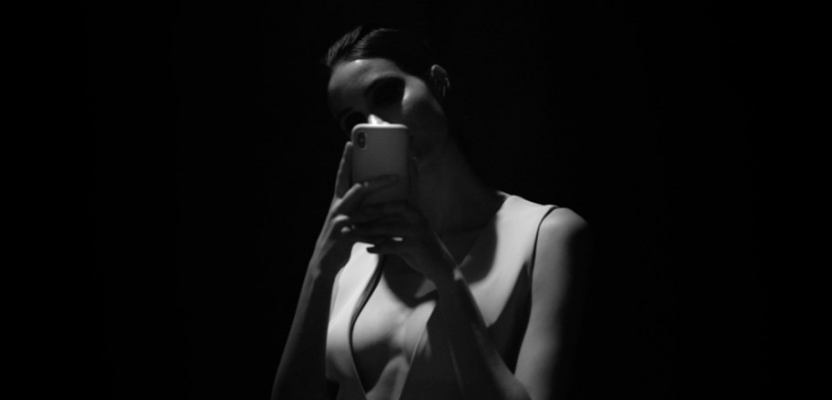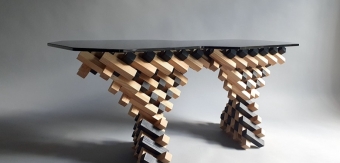Making our products and services as easy and natural to use as possible is often easier said than done. In many cases there are hundreds of moving parts and wheels within wheels to negotiate and condense into a cohesive and organic user experience. This is why user experience designers (UX designers) have become such a necessary piece of the puzzle in recent years.
But if you’re in the market for top UX designers to create a functional front-end for your product, service, app or website, where should you be looking and what should you be looking for? And if you are interested in becoming a UX designer, where to learn about UX design.
What is a UX designer?
User experience (UX) design is the process design teams use to create products that provide meaningful and relevant experiences to users. UX design involves the design of the entire process of acquiring and integrating the product, including aspects of branding, design, usability and function.
Designing an experience includes not only making the software easy to use but also designing the other experiences related to the product, for example, the marketing campaign, the packaging and after-sales support. Most importantly, UX design is concerned with delivering solutions that address pain points and needs. After all, no one will use a product that serves no purpose.
According to Dan Norman, the originator of the term “user experience,” a good UX designer needs to understand that any product or service is more than just a product or service. He explains: “No product is an island. It is a cohesive, integrated set of experiences. Think through all the stages of a product or service – from initial intentions through final reflections, from the first usage to help, service, and maintenance. Make them all work together seamlessly. That’s what UX design is all about.”
What to look for in a UX designer?

A UX designer attempts to answer the question: "How can we make the experience of interacting with a computer, a smartphone, a product, or a service as intuitive, smooth and pleasant as possible?"
They are concerned with the entire process of acquiring and integrating a product, including aspects of branding, design, usability and function. It’s a story that begins before the device is even in the user’s hands.
UX designers don’t just focus on creating usable products either; they concentrate on other aspects of the user experience, such as pleasure, efficiency and fun. Consequently, there is no single definition of a good user experience. Instead, a good user experience meets a particular user’s needs in the specific context where they use the product.
Means you are looking for a very specific type of individual that can see the wood for the trees right from the get-go and understand how people are going to react to the final product.
The best UX designers should have:-
A strong holistic view
An excellent UX designer should have a global view. I don’t mean that they should have a control on everything, but they need to have the ability and sense of responsibility to take the whole product flow into consideration. For example, how to cooperate with the upstream & downstream departments at the different stages of the design & development of a product? How to get support from them? These all shows the holistic view of UX designers.
Team player acumen
UX design is like a team sports. In today’s complex environment, most of the time a UX designer works as part of a UX team, which may consist of UX designers, UI designers and UX researchers. A UX team is typically part of a larger product team, which consists of PM, engineering, a UX team, and potentially more. In addition, UX designers often function as a facilitator of various different teams beyond just PM and engineering. UX designers also find themselves serve as an evangelist to educate people from other groups not familiar with UX. Especially when working as a facilitator or an evangelist, you need to be great at collaboration.
Curiosity
Curiosity drives inquisitive thinking, willingness, eagerness to experiment, research, and interest to learn. Curiosity is the seed of your problem-solving tree. One thing that you find common in all successful UI/UX designers is their pursuits of seeking never fade away. Not only their curiosity, let them tap into new ideas, processes, and methodologies but it also gives them a problem-solving mindset. Remember, a good designer questions often.
A sense of empathy
Empathy is the art of seeing from the eyes of others, listen with the ears of others, thinking with the mind of others, and feeling from the hearts of others. Seems difficult right? But fortunately, it’s not. All you have to do is place yourself in the shoes of your other. As a UI/UX designer, you must keep your agenda behind users’ agenda and acknowledge users feeling. Asking questions and Mirroring users always help with empathy and knowing their pain points.
The ability to tell a story
The bad news is not every designer is a good storyteller but the good news is you don’t have to compete with Shakespeare. Although, no one will mind having a designing Shakespeare isn’t it? We live in the world of information overloading and to cut the clutter in delivering the information to our users it is an advantage to use storytelling. Storytelling makes the experience emotionally, influential and enjoyable for your users. A good UI/UX designer always makes it through a compelling series of thoughts/experiences backed by logic and facts.
An analytical mind
A UI/UX designer has to work with a lot of data and information. From collecting data to later interpreting and analysing it, working with a logical mind comes as second nature to UI/UX designers. A good designer has the ability to take useful insights from the information and use it to solve the problem using pattern, facts, logic, and product designing. An analytical mindset helps designers to understand why one thing is not working and why others might work for the user, which is the basis for problem-solving.
A lack of ego
The core of user-cantered design practice is that a product or a service should be designed for a user, not for a UX designer. It’s so easy for UX designers to get personally attached to their own designs. It becomes your own baby. I’ve been there too. And it’s so tempting to have a personal attachment to your design, because that makes it a lot easier to put your hard work on it. As human beings, probably it’s not possible for any of us to become completely free of our own ego. Nevertheless, it’s important to keep your ego in the background as much as possible. In order to work effectively, it becomes critical that your ego is not at the forefront.
Creativity (of course)
Creativity leads to innovation. Although when it comes to creativity in UI/UX designs people often confuse it with market design. A shrewd UI/UX designer will always apply creativity based on user experience and digital product design and not something that just looks amazing. They understand a website or application is more than just good looks and information providers and use their creative schema to make things flexible and viable.
Where to look for UX designers

Targeted outreach is among the most effective ways to hire a UX designer, especially if the team has prior experience working with good designers and/or has a large network. With your team and everyone you know who might have worked with a good designer, brainstorm a list of all the great people they’ve worked with, reach out to them, and/or ask them to refer other people they’d recommend.
Also look to larger design teams to see where you might be able to shave off talent, so to speak. Companies like Google, Yahoo!, LinkedIn, eBay, Apple, Adobe, Intuit, Twitter, and Facebook can employ hundreds of designers and are fertile ground for breeding designers who can work with cross functional teams to ship products. Because they have large teams, junior designers get mentored by more senior designers and are exposed to good design leadership and management practices.
For early-stage startups looking to hire a mid- to senior designer who can eventually lead, grow, and manage a design team, a designer from a large in-house team who has worked there for 2–4 years makes a great candidate for recruiting into such a role.
Startups and smaller companies are also a viable source for designers, particularly if they have been with the company for 2–4 years and the future of the company is uncertain. Be aware, however, that some designers who only have experience in startups may lack a mature design process and/or ability to lead or scale a design team as it grows. If a designer’s experience is mostly comprised of a series of short stints (< 18 months) at startups, take time to understand what happened, not just from the candidate’s perspective but also from founders, co-workers, investors, etc.
LinkedIn is always an option too, but it is a vast and cavernous resource. Creativepool, meanwhile, is focused specifically on creative professionals and there are hundreds of web designers within our ranks ready and waiting to meet you.
Writing a job description
Of course, if you’re going to be casting the net out for a UX designer, you’ll need to write a decent job description. Start by figuring out how much you can afford to pay them.
The average base pay for a UX designer is around £50,000 per year according to Reed.co.uk. Those with more experience and a proven track record of success in this area can also command even higher salaries.
Be specific about your expectations. While it's important to hire the best person for the job, it's equally important to be clear about what your company needs from that person.
With your priorities and skillset in mind, it's time to create a job description. This should include a clear overview of what the role entails and any specific requirements or qualifications you have in mind.
You may also want to note any benefits that come with the position and let candidates know what you can offer. This will help you attract the right UX designers for the job.
Using Creativepool

Looking to hire a UX designer? Creativepool has thousands of super talented members waiting to make your projects work better for their users.
There are 3 ways for you to find a UX designer on Creativepool.
1. Search and Contact
Want greater control of who you work with and the process behind it? Searching for talent directly and then handpicking who you would like to work is a great way to be proactive in your talent hunting.
Simply search for UX designers and browse through the results. You will be able to look through projects, CVs/Resumes of the talent listed to make an informed decision on your next hire.
On Creativepool we use a series of indicators to rank our members based on job title. Looking through the top 25 ranked UX designers is also a powerful and quick way to view the best in talent on the platform.
Once you have found someone whose style and experience works for you, contact them directly by clicking on the message tab. Searching is ideal if you have a very specific idea on who it is that you would like to be working with.
2. Post a studiogig
Looking for a freelance UX designer? The quickest way to find available talent is to advertise your brief. With us, briefs for individuals are called studiogigs.
Posting your role is formulated to be quick and easy and once you have posted your role, we get busy behind the scenes selecting the best talent to send out your brief to and then post the role on the jobs board. Once you have advertised your brief then just relax and wait for applicants to come to you directly!
3. Post a job
If you are looking for a permanent UX designer, then advertising a UX designer job is the way for you to attract talent. The process is identical to posting a studiogig.
Once you have posted your role we will check the details of the adverts, send out job alerts to our community that best match your criteria and post on the jobs board. Like studiogigs applicants will apply to you direct.
Whether posting a job or a studiogig or searching for talent you are in control on who you hire. You are under no obligation to choose any of the applicants, and you negotiate with them directly on rates.
If you need any help on your talent hunt. You can chat with us or send us a message. We'd be happy to help.






